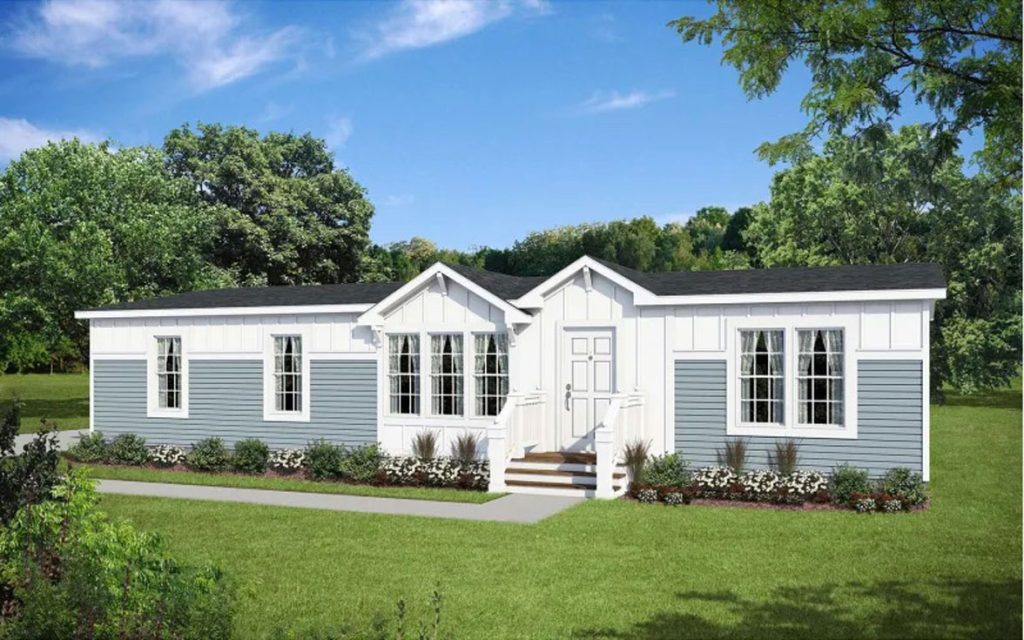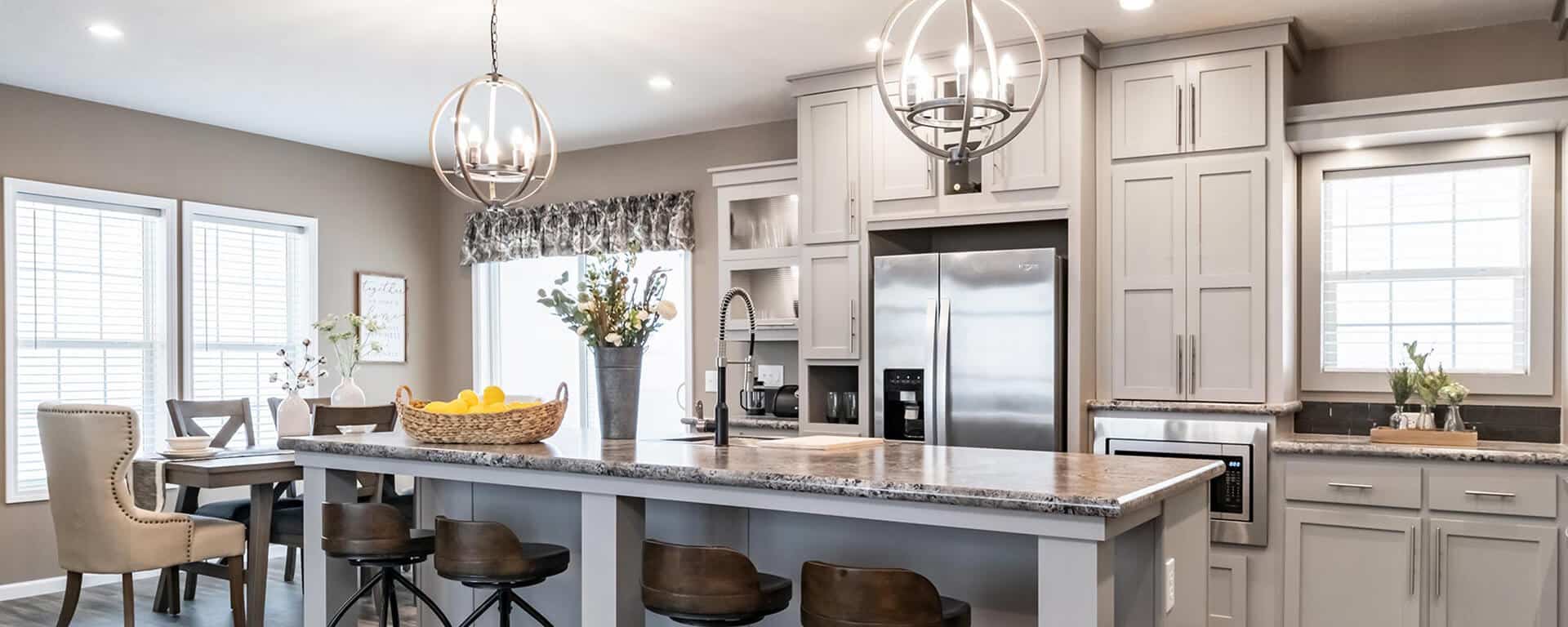How To Super Insulate Your Mobile Home The Right Way
Smartsites webuser
may 24, 2024

Ensuring your mobile home is well-insulated is key to maintaining a comfortable living environment while minimizing energy costs. Effective mobile home insulation involves choosing the right materials and focusing on areas prone to heat loss, such as windows, doors, and the roof. By super insulating your mobile home, you can significantly reduce heating and cooling costs, prevent moisture issues, and enjoy a quieter indoor atmosphere.
Rely on Ignite MHC for top-quality, affordable manufactured homes across prime locations nationwide. Our dedicated team ensures that each home meets the highest standards of insulation, contributing to lower energy bills and increased comfort for our clients. Whether you are looking to buy or rent, Ignite MHC provides hands-on support throughout your journey to ensure a seamless transition into your new home.
Identify Key Areas to Insulate for Maximum Energy Efficiency
Prioritizing areas such as the roof, floors, and walls can significantly reduce heat loss. For instance, the roof is a primary heat escape route, so adding insulation there can prevent warm air from rising and escaping, especially during colder months.
In addition to the roof, the floors and walls are vital areas to address. Insulating the floor can prevent cold air from entering through the underside of the mobile home, which is often exposed to the elements. Wall insulation, similarly, acts as a barrier against heat loss and gain, maintaining a stable indoor temperature and reducing the workload on heating and cooling systems.
Choose the Right Insulation Material for Your Mobile Home
Selecting the appropriate insulation material is essential for effective energy conservation in mobile homes. Fiberglass batts are commonly used due to their affordability and ease of installation. They fit snugly between wall studs and floor joists, effectively blocking heat transfer.
Another excellent option is rigid foam insulation, which offers a higher R-value per inch than fiberglass and can be used in both walls and floors. For areas that require a moisture barrier or have limited space, spray foam insulation provides a high R-value and exceptional air sealing properties, making it ideal for preventing drafts and moisture-related issues.
Install Reflective Insulation for Enhanced Thermal Barrier in Walls
Reflective insulation is an effective solution for enhancing the thermal barrier in a mobile home’s walls. This type of insulation reflects radiant heat, keeping the interior warm in winter and cool in summer. It is particularly useful in climates that experience extreme temperatures.
By installing reflective insulation, homeowners can create a more energy-efficient environment that maintains a consistent temperature, reducing the need for frequent thermostat adjustments. The reflective surface bounces back interior heat during cold months while deflecting external heat in the summer, ensuring comfort year-round without excessive energy consumption.
Use Spray Foam Insulation for Tight Spaces and Corners
Spray foam insulation is particularly effective for sealing tight spaces and corners in mobile homes, where traditional insulation materials might not reach. This type of insulation expands upon application, filling gaps and creating an airtight and moisture-resistant seal. It significantly enhances energy efficiency by preventing air leaks and minimizing thermal bridging.
The versatility of spray foam makes it ideal for areas around plumbing fixtures, electrical outlets, and windows, where air infiltration can occur. By effectively sealing these points, spray foam insulation can greatly reduce energy bills and improve the overall comfort of the mobile home.
Upgrade Windows with Energy-Efficient Models to Reduce Heat Loss
Replacing old windows with energy-efficient models is a significant step toward reducing heat loss in a mobile home. Modern windows with double or triple-pane glass, low-emissivity (low-E) coatings, and quality frames can prevent heat transfer and enhance insulation. These windows not only help maintain a consistent indoor temperature but also contribute to lower heating and cooling costs.
Investing in energy-efficient windows also brings the added benefit of reducing noise from outside, enhancing security, and increasing the property’s overall value. As energy costs continue to rise, the initial investment in high-quality windows will pay off through substantial savings on utility bills.
Seal Doors and Windows to Prevent Air Leaks in Mobile Homes
Sealing doors and windows is an essential step in weatherproofing mobile homes, as these are common areas for air leaks. Using weatherstripping or caulking to seal these openings can prevent cold drafts and heat escape, thereby improving energy efficiency. Properly sealed doors and windows also help prevent moisture and dust from entering, which can contribute to a healthier living environment.
For the best results, it is important to regularly check the seals on doors and windows and replace any that are worn or damaged. This maintenance ensures that the mobile home remains insulated against weather changes and that energy usage is kept to a minimum. This simple upgrade is cost-effective and can have a significant impact on the comfort and energy consumption of a mobile home.
Insulate Underneath the Mobile Home to Prevent Cold Floors
Insulating under the mobile home is essential to prevent cold floors and reduce overall heating costs. Proper insulation beneath the floor blocks cold air from entering and minimizes heat loss. This is especially critical in winter months when cold air can penetrate uninsulated spaces, leading to uncomfortable living conditions and increased energy consumption.
For best results, materials such as fiberglass batting or rigid foam panels are recommended. These should be securely fitted between the floor joists under the mobile home. Ensuring that this area is well-sealed not only improves comfort but also enhances the efficiency of the home’s heating system.
Apply Weather Stripping to Doors for Improved Insulation
Applying weather stripping to doors is an effective and inexpensive way to improve a mobile home’s insulation. Weather stripping fills the gaps around doors, preventing both drafts and energy loss. This simple measure can significantly impact maintaining a consistent indoor temperature and reducing the energy needed for heating and cooling.
Regular checks and replacements of weather stripping are necessary to ensure effectiveness, as materials can deteriorate over time. Ensuring that doors are properly sealed will not only save on energy costs but also protect the interior of the home from weather-related damage and pests.
Utilize Thick Curtains and Blinds to Insulate Windows
Thick curtains and blinds are an excellent addition to any mobile home’s energy-saving strategy. They provide an additional layer of insulation at windows, where a lot of heat loss can occur. During the winter, heavy curtains or blinds can be closed to keep heat in, while in the summer, they can block out sunlight, helping to keep the interior cool.
Choosing curtains with thermal lining or blinds designed to provide insulation can enhance their effectiveness. This window treatment is not only functional in controlling temperature but also adds aesthetic value to the home’s interior, making it a practical and decorative investment.
Consider Roof Coatings to Reflect Heat and Insulate
Applying reflective roof coatings is a strategic method to enhance insulation and reduce cooling costs in mobile homes. These coatings are designed to reflect sunlight and heat away from the home, keeping the interior cooler during hot weather. This can significantly decrease the reliance on air conditioning, leading to lower energy bills.
Roof coatings not only reflect heat but also provide a protective barrier against weather elements, which can extend the life of the roof. Selecting a high-quality, durable roof coating can prevent leaks and reduce maintenance costs over time. For those living in warmer climates, this investment can enhance both comfort and energy efficiency.
Inspect and Replace Old Insulation in Mobile Home Walls
Regular inspection and replacement of old insulation in mobile home walls are critical for maintaining optimal energy efficiency. Over time, insulation can settle or become damaged, diminishing its effectiveness. Inspecting the insulation periodically ensures that it continues to perform its intended function, keeping the home warm in winter and cool in summer.
If inspection reveals degraded or insufficient insulation, replacing it can drastically improve the home’s thermal barrier. New insulation materials offer better performance and can be more energy-efficient, potentially reducing overall heating and cooling costs significantly. Upgrading wall insulation is an investment in both comfort and energy savings.
Explore the Benefits of Double Glazing for Mobile Homes
Double glazing is highly beneficial for mobile homes, especially in terms of thermal insulation and sound reduction. This window technology involves two layers of glass with a space between them, which acts as an additional barrier against temperature changes. Double-glazed windows can keep the interior more stable, irrespective of external weather conditions.
Apart from thermal efficiency, double glazing also offers enhanced security and noise reduction, which is particularly valuable in densely populated areas. Although the initial cost may be higher than standard windows, the long-term savings in energy bills and increased comfort make double glazing a worthwhile upgrade for mobile homeowners.
Add Insulated Skirting to Protect Underneath Your Mobile Home
Insulated skirting for mobile homes is crucial for protecting the underbelly of the structure from cold air, moisture, and pests. This type of skirting seals the gap between the home and the ground, preventing cold drafts in winter and excessive heat in summer. It significantly enhances the thermal efficiency of the home, leading to lower heating and cooling costs.
Installing insulated skirting can also protect pipes from freezing in colder climates and reduce the risk of moisture-related issues, such as mold and mildew. As a bonus, insulated skirting can improve the overall aesthetic of the mobile home by providing a clean, finished look. Homeowners should consider this upgrade not only for its functional benefits but also for its potential to increase the home’s value.
Regularly Check Insulation for Damage and Efficiency Upgrades
Regular inspections of mobile home insulation are necessary to ensure its effectiveness and condition. Over time, insulation can become compacted or damaged, which diminishes its ability to maintain temperature control. Checking the insulation allows homeowners to address any issues promptly, maintaining optimal energy efficiency.
During these inspections, it’s also wise to consider efficiency upgrades. Advances in insulation materials and techniques mean that newer products might offer superior performance. Upgrading insulation can be an economical decision in the long run, as it can drastically reduce energy consumption and enhance the comfort of the home. Ensuring that your mobile home’s insulation is in good condition and up-to-date is a proactive measure that pays off in both comfort and cost savings.
Mobile Homes in USA: Committed to Quality and Comfort
A key initiative by Ignite MHC is to offer a wide selection of mobile homes in USA, focuses on promoting well-insulated mobile homes that meet the diverse needs of American families. We understand the importance of energy efficiency and cost-effective living solutions. Our homes are designed to provide superior insulation, ensuring that residents enjoy comfort, sustainability, and affordability in their living spaces.
